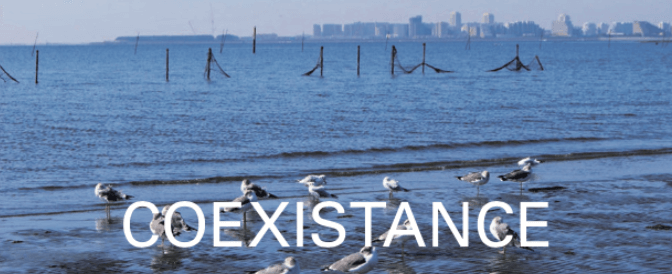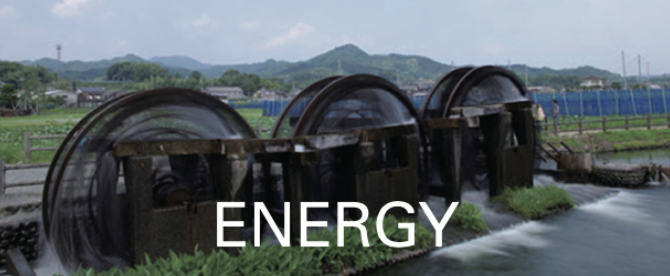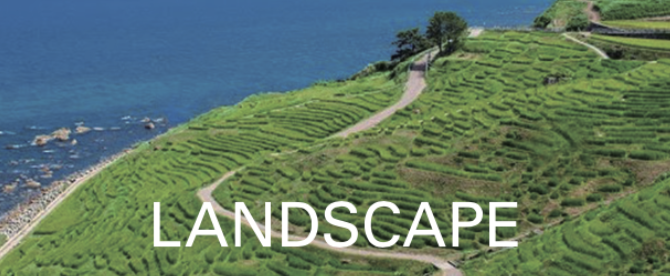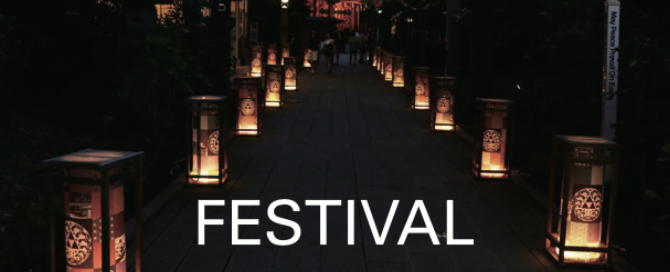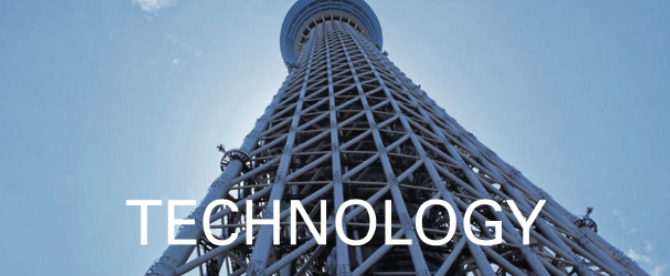
The Water mill’s ring has a diameter of approximately 4.6 m. and its width is about 0.97 meters. The Minegishi family’s water mill, called “Shinguruma”, was founded around 1808, and has been continuously rebuilt. Its existing equipment is consisted of 14 pounding mortars, 14 pestles, 2 burstone mills, 2 sieves, and 2 elevators. It is a multifunctional, double-sleeve, large-scale water mill.
It reflects the Musashino region, in both size and form. It is designated and preserved as a Tokyo tangible folk cultural property, due to the wonder of the mechanism and the high cultural property value.

A robot army serves as the guardian of this museum. They stand at the roof garden atop the spiral staircase next to the Nekobus, the cat bus room. The theme of the museum next to Inokashira Park, is ”there is a forest in Mitaka where you can become a lost child, together with children.
Trees and flowers grow abundantly in the roof garden, and you can experience the transition of the four seasons. It is a space where animation and nature overlap, formed by director Hayao Miyazaki who mentioned “animation has no humidity”.
-Advanced reservation only.
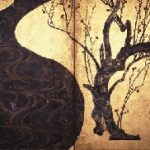
In this modern space, built along the ocean of Atami, national treasures, like the Red and White Plum Blossoms folding screens by Ogata Korin (1658 – 1743) a Japanese painter, lacquerer and designer of the Rinpa school and other masterpieces representative of Japan, are exhibited. Excellent items from the continent and Oriental antiquities are also here.
In the site outside, there are 360 red and white plums, 3600 azalea of 40 species, hydrangea and Hagi, bush clover. It is designed for enjoying the seasonal flowers. Refreshing landscape with the masterpieces, you can deeply experience the beauty that the garden and nature weave.

This museum is located on a small hill, and sculptures of famous artists greet visitors on its promenade. The core collection of this museum are modern paintings, mainly Japanese and Western landscapes, including Auguste Rodin (1840 – 1917) a French sculptor, and modern sculptures.
This museum also collects a wide range of excellent art. The collection of the Kanou school, by painters active in the early modern time, is enriched, too. The theme of this collection comes from the characteristics of Shizuoka, blessed with many scenic spots.
You can also fully enjoy the interweaved scenery of natural harbors, mountains and rivers.

Takeshi Ihachiro Nobuyoshi (1752 – 1825), was born at Shimo-Utsutsumi Village in Sotoboso of Boso Peninsula, Chiba. He became Horimono-Daiku, a sculptor for temples and shrine buildings. And Ihachiro carved waves at Ranma, transom. He was even told that his carved wave was the best in Japan, and “Don’t carve a wave, when you go to Kanto region which was the territory of Ihachiro.” The instantaneous movement of the waves carved by Ihachiro is comparable to that of modern high-sensitivity cameras. This museum introduces Ihachiro, who influenced the Ukiyo-e by Katsushika Hokusai (1760 – 1849), a Japanese artist of Ukiyo-e painting and woodblock printing.
―
Ihachiro’s work was born in the nature and culture of Awa Chiba, the southeastern part of the Boso Peninsula. It is a dynamic Baroque style which is a free flow of emotional expression of the early modern, the latter Edo period (1603-1868).
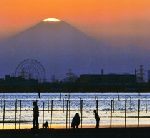
Since ancient days, Japan’s shallow sea has given us the power to live. Funabashi Sanbanze is the Sea of Fertility in the southern end of this park, which is the inner part of Tokyo bay and its 1,800 hectare expanse. The shallows are a fishing ground for Japanese sea perch, Flatfish, Surf clam and Seaweed.
In the Edo period (1603 – 1868), this shallow used to be reserved as Osaiura, the ground of the purveyors to the Shogun family.
A lot of wild birds, like Black-headed gull, gather here in search of rich food. Here you might see The Diamond Fuji, the phenomenon where the summit of Mt. Fuji meets the sun, in February and October, when the weather conditions are just right.
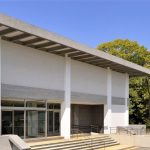
This museum mainly exhibits Japanese art, and possesses Aboshizu attributed to Kaihou Yusho (1533 – 1615), a Japanese painter. In the scenery of the beach drying the fish net, the change of reeds from right to left shows the passage of the seasons. Kaihou was born in the chief retainer family of the Asai clan Omi Shiga. He lost his family in the war. But he revived as an excellent painter in the Azuchi-Momoyama period (1573 – 1603) and in the beginning of the Edo period (1603 – 1868).
He drew a landscape of the waterside, which overlapped the scene of his hometown.
This museum’s garden, Ryusen-en, is located in the basin of the Gotengawa River, which has a Japanese style garden with a path around a central spring and a Japanese house. You can walk in the garden when the museum is open.
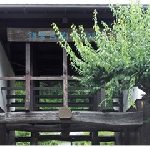
This museum was relocated an an Old Private House, in Kita Kamakura, connected to the Kamakura Kaido Road. Therefore, it has unrefined and primitive taste. This museum possesses medieval pottery, and masterpieces like white porcelain and celadon porcelain from the Song Dynasty (960 – 1279). They systematically introduce the attractiveness of medieval pottery and porcelain to show the social conditions of the Kamakura period (1185 – 1333). It holds special exhibitions, too.
It is an Old Private House. Gokenin, vassals in the Kamakura Shogunate were let to live along Kamakura Kaido Road for the defense of the Kamakura Shogunate, by Minamoto no Yoritomo (1147 – 1199), the 1st shogun of the Kamakura Shogunate. Bushido, chivalry in Kamakura, is like the Noh play entitled “Hachi no ki”. In that play, Hojo Tokiyori (1227 – 1263) the 5th Shikken, the Regent of the Kamakura Shogunate, appeared to visit various provinces, to observe the conditions of the people and to stay at the house of a Gokenin in the snowing evening. Although his house was unrefined and primitive, he welcomed Tokiyori with a warm mind.
Japanese Bushido has the backbone of the Zen philosophy in Kamakura.
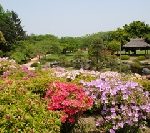
Ishida Mitsunari (1559 – 1600), a feudal lord, and the commander of the Western army in the Battle of Sekigahara in 1600, tried endurance tactics against Oshijo Castle, in the Siege of Hojyo clan Odawara. The folk museum introduces the Shinobi castle, which withstood the siege. When Socho (1448 – 1532), the linked verse poet, visited here and wrote about this castle, surrounded by marsh in every direction, and repeatedly overlapped the dead reeds, this was really the riverside district.
This park uses the site of the outer moat of Oshijo Castle. There, you can enjoy the flowers of each season, using the technique of the riverside district style landscape gardening, from the Gangnam region in China.
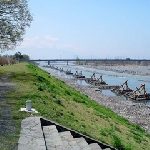
The intersection of the Kamanashi River, upstream from the Fuji River, and the Midai River to join the Kamanashi River has been flooded since ancient times. Takeda Shingen(1521-1573), the load of this province, ordered the building of discontinuous embankments, instead of continuous embankments, to avoid the flooding. A water channel was created in the shape of a figure eight, a method of returning the flooded water back to the river.
On other hand, piling stones at several points upstream controlled the flow. Those methods were combined to avoid flooding. Wisdom is effort and ingenuity that harmonizes with Nature, great respectful things.

This shrine enshrines Mt. Nataisan(2484m), Mt. Nyohosan(2464m), and Mt. Tarosan(2368m). This shrine started in 767, when Shodo Shonin, a High Priest in the 8th – 9th century, made Hokora, a small shrine for the God of Mt. Nantaisan. It was a place for priests to seek spiritual enlightenment.
Minamoto no Yoritomo (1147 – 1199), the 1st shogun of the Kamakura Shogunate, devoutly worshiped at this shrine. He was the guardian deity of Bando Musha, warriors from east Japan. Chugushi shrine is located at the base of Mt. Nantaisan, at the northern shore of Lake Chuzenji.
The treasure house in the Chugushi shrine possesses a Long Sword, Bizen Osafune, from the period of the Northern and Southern Courts (1336 – 1392). It also has a Gilt bronze Mikoshi, a portable shrine used in the Yayoi Festival, a festival held at this shrine each April. Those exhibitions tell the history about the guardian deity of Bando Musha.
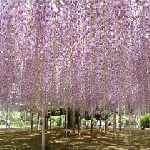
Koga became the center to oversee samurai clans in the Kanto region by Ashikaga Shigeuji, who was the Kanto district administrator, Kogakubo, after moving from Kamakura. This continued during the age of provincial wars in the middle age of the 15th -16th century. This flower park is 100,000 square meters and is a “Flower art village” where you can enjoy flowers of different seasons. There are Wisteria trellis with 600 tatami mats, 4 great Wisteria over 150 years old, and a white Wisteria tunnel with a length of 80 m. You can enjoy superimposing the Wisteria with the local history of the samurai warrior.
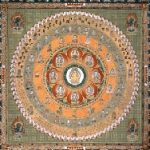
This temple originated from the foundation of Buddhism at Mt. Nikko by Shodo Shonin, a High Priest in the 8th – 9th century, in the Nara period (710 – 794). At this temple Shinbutsu-shugo, the syncretism of Shintoism and Buddhism, and mountain worship developed, during the Kamakura period (1185 – 1333).
Rinnoji no Miya, the imperial Abbot of Nikko, was also Tendai Zashu, the head priest of the Tendai sect, and Ueno Kaeji Sansu, the head priest of Kanenji Temple in Ueno Tokyo, in the Edo period (1603 – 1868). This layout of a complex of temple buildings shows the history of the greatest sacred mountain in the Kanto Area.
This treasure hall possesses Shijoko Mandarazu, the image of Mandala, a geometric configuration of symbols to be used as a spiritual guidance tool in Buddhist Japan. Shijoko is the Great Wisdom from the head of a Dainichi Nyorai, Supreme Buddha of the Cosmos and the central object in Esoteric sects of Buddhism. This image of Mandala prays for sedation and good health in extraordinary natural occurrences and epidemics.
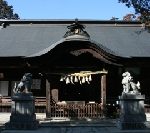
Kai Province Yamanashi began in the 7th century, moved its center to the eastern part of the Kofu basin with Kai-Genji, the Minamoto clan, in the Heian period (794 – 1185). This shrine is located on the eastern edge of the basin and overlooks the mountains in the southeast, which was founded in 865, and was the most important provincial shrine. This shrine enshrines Konohana sakuyahime no Mikoto, the Goddess who is the daughter of Oyamatsumi no mikoto, a god of mountains, sea and war in Japanese mythology and sowed seeds of flowers from the top of Mt. Fuji. This Goddess is graceful and elegant, like cherry tree blossoms blooming.
The Takeda clan, which was the feudal lord of Kai Province, prayed for their victory from generation to generation. They dedicated offerings to this shrine such as an Imperial letter by Empero Go-Nara (1496 – 1557), which was the offering from Takeda Shingen (1521 – 1573), the feudal lord of Kai Province. Those offerings have been handed down to this shrine.
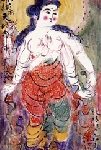
Yamato-ga prints, created by Munakata Shiko (1903-1975), express the overflowing vitality of the natural of Aomori prefecture. He was first inspired by the works of Van Gogh(1853-1890) and he started with oil paintings, as a self-taught artist. His true calling came from the Edo period (1603-1868) style of woodcut block print art praised world, as he began using woodcut block print to establish his own point of view. He received world praise for these works. His greatest gift was how he was able to breathe life into the silent stillness of scenery, such as snowscapes.
The museum is adjacent to the Sannai-Maruyama Archaeological Site, an ancient Jomon era settlement. This location provides visitors with a look into the unique art shaped by the distinct local culture.
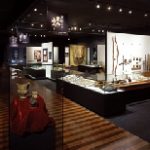
This museum consists of Sugae Masumi (1754-1829) Resource Center, and six sections, including: archeology, history, folklore, handicrafts, biology, and geology. The Resource Center and Memorial uses a range of media to give visitors important knowledge about Akita prefecture. There is also an exhibit for Konan Naito (1866-1934), a prominent Sinologist of the early 20th Century and an authority on Oriental Studies who lectured “A bittern of Tofu, is the same as Chinese culture in Japanese Culture”. The exhibit goes into detail of his work and how it promoted a better understanding of Chinese history and its influences on Japanese culture. This museum is located in Akita Prefecture’s Koizumigata Park, in the Megata and Ogata lagoons, “Places of Scenic Beauty”.
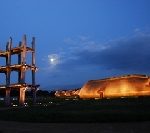
Sannai Maruyama site comprises a large-scale settlement which lasted for a long period of time from the early to middle Jomon periods. This hall introduces well the site of the settlement from the Jomon period (16,000 years ago – 3,000 years ago), and life at that time, through an original movie in the theater and on displays.
The restaurant has a menu where you can experience Jomon food. The volunteer staff of field-guides are fantastic.
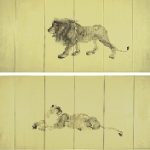
Hirafuku Hyakusui (1877-1933) was born in Kakunodate town, in Akita prefecture. He studied under Kawabata Gyokusho (1842-1913) and graduated from the Tokyo School of Fine Art. You can feel his attitude towards the target with a spirit of realism, from the work of lions.
museum possesses the works of Akita Ranga (Japanese painting in Dutch-style) by Satake Yoshiatsu (1748-1785), who was the 8th feudal lord of the Akita Domain, Odano Naotake (1749-1780), and the collections related to Akita prefecture by Hirafuku Suian (1844-1890), his son Hyakusui and Terasaki Kogyo (1866-1919). In addition, there is a memorial room of Okada Kenzo (1902-1982), a western-style painter who was active in New York.
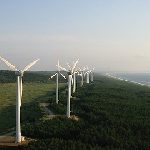
Noshiro faces the Sea of Japan. It originally appeared with the name of Nushiro, in 658 in Nihonshoki, the Chronicles of Japan. It was the place Abe no Hirafu, a Japanese general of the Asuka period (550 -710), visited along his conquest of the eastern area. It was recorded in 771 as the port of the envoys from Bokkai, established after the fall of Goguryeo (37 BC – 668) in the Korean Peninsula and Manchuria of the Northeastern China, by the alliance of Sila (57 BC – 935), during theTang Dynasty (618 – 907). The old name, Nushiro came from the Ainu language, meaning “grassland on the plateau”.
It’s strong winds blow constantly on the coast of Noshiro. The 24 power generators, in a row over 3km, create modern circulating power along the grassland.

Matagi runs agriculture programs in the summer and hunting around Mt Moriyoshiyama in the winter. The mountain has been the object of worship. Matagi burns Abies mariesii (Aomoritodomatsu), from the forest of Mt. Moriyoshiyama, and performs a smoke ablution before hunting.
They have the faith that the mountains are dominated by God. Matagi was stronger than the Ogre as Mount Samurai. The museum exhibits Matagi materials such as unusual hunting tools and costumes. There is also a Matagi school, where you can walk the mountains together with local Matagi inheritors.
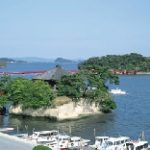
Matsushima is a famous scenic spot which had been described as a place with poetic associations, since the days of Manyoshu, the 8th century anthology of Japanese poetry. On evenings around the time of a full moon, waves are lit and lead by the moon, within about two hours of the start of the moonrise.
The symbol of Matsushima is Godaido, a Hall dedicated to the five Guardian Kings of Buddhism, which is said to have been founded by Sakanoue no Tamuramaro (758 – 811), the first Shogun, Great General. The name came from that Godai Myoo, the five Guardian Kings of Buddhism were enshrined by Jigaku Daishi Ennin (794 – 864), the 3rd head of the Buddhist Tendai sect.
It became also the oldest existing architecture in the Azuchi-Momoyama period (1573 – 1603) in the Tohoku region by Date Masamune (1567 – 1636), Japanese feudal lord, and the founder and the first lord of Sendai Domain.
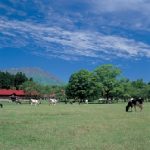
Koiwai Farm is a private farm established in 1891, which, at 3,000 ha, is the largest farm in Japan. It was made through the reclamation of the barren field at the foot of Mt. Iwate and has been engaged in dairy farming since the Meiji period (1868 – 1912).
Koiwai Farm Makiba-en is a sightseeing area, where you can enjoy a tour of cattle and sheep, experience horse riding and butter making, and take a guided tour that introduces the nature and history of the farm. At Makiba no Tenmonkan, Astronomical Observatory in the garden, you can observe the sky of stars and sunspots.
– Miyazawa Kenji (1896 – 1933) was a Japanese novelist and poet of children’s literature who liked Koiwai Farm. He wrote “Night on the Galactic Railroad” a fantasy novel about a Lonely boy Giovanni, travels to the Milky Way with his friend Campanella.
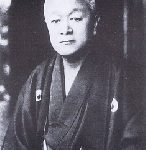
The richness of the Jomon Period (16,000 years ago – 3,000 years ago) is demonstrated through its excavated artifacts. Prehistoric cultures, the Jomon Period, had no system of writing. Thus, they would invariably disappear once the last settlement of that society met its demise. The written language, introduced to the Japan Islands by those who migrated from continental Asia, became the means for keeping a record of this complex culture.
Konan Naito (1866-1934), was a prominent 20th Century Sinologist and authority on Oriental Studies. His life goal was to study and understand the “true history of Japan.”. This museum exhibits the results of his research.
This museum displays items from his childhood such as early schoolwork, compositions, a model of his home, during his later life, and samples of his own classical Chinese poetry.
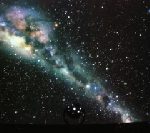
This observatory opened in 1955, voluntarily funded by the citizens of Sendai. During postwar restoration, the observatory was a boon for amateur stargazers, as it utilized the Tohoku University’s Faculty of Science facilities.
Presently, this facility also offers a variety of programs, including those related to history, the environment, life sciences, music and the arts.
From ancient times, the people of Tohoku have had a devout interest in astronomy and, in particular, the North Star and the Big Dipper.
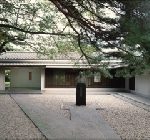
Rainwater splits along the ridgeline of the Zao Mountain Range. Provinces base Ritsuryo system, a system of a centralized government based Ritsu, a criminal code and Ryo, an administrative code, were divided along the watershed, in the Nara period (710 – 794). Ueyama City flourished as a post town on the Ushu Kaido Road in the castle town of Dewa Province, which was the hometown of Saito Mokichi (1882 – 1953), a Japanese poet and a psychiatrist.
Mokichi made brilliant achievements in the history of modern Tanka, Japanese poems with thirty-one syllables. He kept making Tanka about his native mountain, river and people throughout his life. This museum introduces the original source of peace and quiet in his poetry.
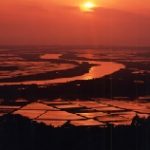
On the Mogami River, the snow accumulated in the vast forest of beech trees and flowed out into a large stream and pours into the Sea of Japan. The Mogami River boating transportation flourished since the Nara period (710 – 794) and continued to support Kyoto, Osaka and Edo. The transportation had continued to supply safflower for dyeing, weaving, and makeup, for which it was the top supplier in Japan during the Edo period (1603 – 1868).
The group of Minamoto no Yoshitsune (1159 – 1189) the famous warrior and direct descendant of the Minamoto clan, went up the river by boat during the Kamakura period (1185 – 1333). Matsuo Basho (1644 – 1694), the most famous poet of the Edo period, went down the river by boat, 500 years later. Their strolls at sunset transcend time and space.
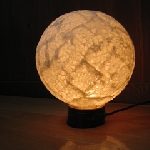
The largest traditional Japanese paper-making town in northeast Japan is located at Kamikawasaki, in Nihonmatsu City, Fukushima. It overlooks Mt. Adatara and has access to the Abukuma River’s pristine water. Traditional paper manufacturing here dates back to the middle of the Heian period (794-1185).
At that time, the paper from Kamikawasaki was called Michinoku Gami in Kyoto. Mayugami was also manufactured here. It was a popular paper among aristocrats, like Murasaki Shikibu (973/978-1041/1031), a Japanese novelist, poet and court lady, and Sei Shonagon (966-1017), a Japanese author, post and a sourt lady. Visitors can actually experience making traditional paper, from the local Kamikawasaki mulberry plants.

This distillery is located where the Hirose and Nikkawagawa Rivers join. Nikka Whisky Distilling Co. Ltd was founded by Taketsuru Masataka (1894-1979). In 1967, he travelled here, tasted the water from the Nikkawagawa River, and decided to build one of his distilleries at this location.
This distillery’s building includes a large kiln and reservoir, were intended to build in order to harmonize with Mt. Kamakura. Swans have been spotted at the new pond newly developed to draw water from Nikkawagawa River.

Iomante is an Ainu word that means “i is it”, and “omante is to deliver or to go”. Important ceremonies of Ainu people include letting the soul of animals go. This lets the souls of the Bear and other animals go, with respect, to the realm of Kamui, the deities.
Akan Ainu Kotan is a village of thirty-six Ainu families who are preserving traditional culture. Traditional dances and plays are presented daily, and museum and folk art stores.
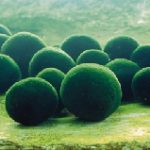
This center is at the Chuurui Island of the Akanko Lake. There, you can observe the quiet sleeping of the special natural monument, the Marimo aegagropila, in the large water tank that reproduces the bottom of the lake.
You can see the amazingly big Marimo, too. Outside, there is an exhibition corner, where you can observe the Japanese huchen and Savlelinus leucomaenis that live in the Akanko Lake. There is also an observation space recommended for commemorative photos.
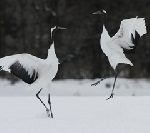
The Tancho, Red crested Crane, are a symbol of the beauty of Japan by the bonds of partnership. They had been preserved well until the Edo period (1603 – 1868). However, overhunting began in the modern Meiji period (1868 – 1912).
In 1924, they were thought to be extinct, until more than a dozen Tancho were confirmed in the Kushiro Shitsugen. After a great deal of time and effort to nurture the population, they were designated as a special natural monument and the species grew to about 1000. This center is a symbol of that miracle.

Asahiyama Park spreads out at the foot of Asahiyama. It is at the base of the Kitoushi Mountains and has a beautifully natural view. Asahiyama Zoo, adjacent to the Park, exhibits the activities of the animals and lets all families enjoy it.
Polar bears, arctic foxes, snowy owl, wolves, Hokkaido deer, red pandas and birds at the water side move around in an environment similar to nature. A memorable encounter is produced.
There is also Kawamura Kaneto Aynu Memorial, 7 km to the west of this zoo.
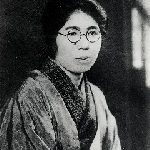
This museum has plenty of materials on Hokkaido literature, modern Japanese literature, and its permanent exhibition covers a wide range of historical developments in Hokkaido literature from Ainu literature to the present.
Mukai Yaeko (1884 – 1962) was an Ainu waka poet and evangelist. In 1931, she was distressed by the miserable state of her homologous, Ainu people and published the Poetic anthology, “Wakaki Utari ni – To young homologous”, which Kindaichi Kyosuke (1882 – 1971), a Japanese linguist, gave a preface to.
It is the anthology from the source of innocence.
